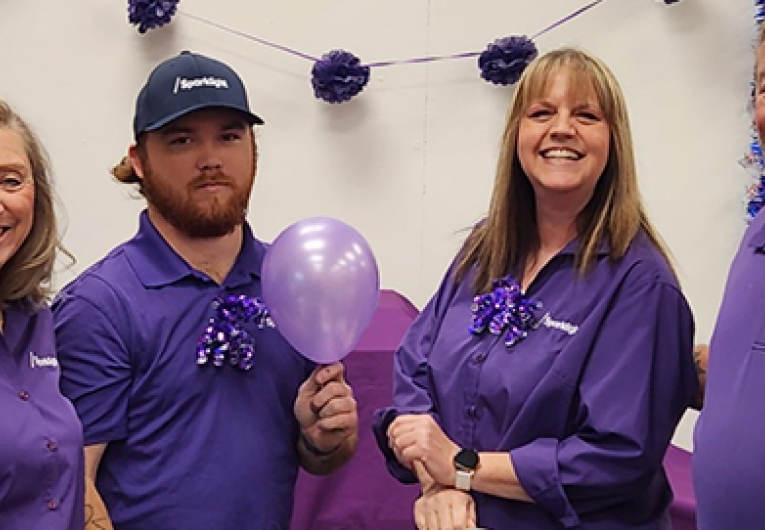
What is Ethernet for Small Business?
Understanding Ethernet's basics and evolution could be your best next step if you're eyeing whether Ethernet would be a good option for your business internet service.
So, here’s a quick tutorial, including Ethernet terms and types and examples of Ethernet service, to help you decide what’s best for your business.
Ethernet: Before and Now
Like other tech evolutions, ethernet connections have come a long way since their initial development in the 1980s, adapting to the needs and changing demands of network and internet technology along the way.
“Before WiFi became ubiquitous, Ethernet was the way to link devices together,” writes Simon Hill in a recent article for Wired magazine.
By running Ethernet cables in a local area network (LAN) or wide area network (WAN), Ethernet enables machines to recognize data meant for them and to send data to other devices.
“It’s still widely used because sending data along cables is faster, more reliable, and more secure than sending it as radio waves, as Wi-Fi does,” Hill writes.
What It Is and Isn’t
When you think of Ethernet, it’s easy to picture that physical connection you’re familiar with — the cable connecting from your computer port and router. However, the term Ethernet actually refers to the communication method or standard.
The key advantages of Ethernet include the security and speed it offers businesses — the connection is faster than wireless. But the flip side is that Ethernet is not mobile.
“You can’t easily add users to a wired network as you would to a wireless one,” notes a blog by Techslang, a tech awareness publication.
Ethernet EPL
Ethernet Private Line or EPL is a point-to-point Ethernet connection that provides a highly high-speed connection directly between two locations without being routed through the public internet.
With bandwidth ranges from 10 Mbps to 100 Gbps, EPL is recommended for businesses with more extensive bandwidth networking needs.
Sparklight’s E-LAN provides LAN-to-LAN connectivity between multiple locations using its MEF 3.0-certified EPL fiber network.
Ethernet DIA (Dedicated Internet Access)
Ethernet DIA can manage massive amounts of data. Because it’s dedicated, you don't have to share bandwidth with others and always have the capacity your business needs to meet demand.
Ethernet DIA is delivered via an Ethernet fiber-optic cable and can handle bandwidths between 1 megabit per second and 10 gigabits per second for both uploading and downloading data.
Sparklight also offers EZ Ethernet, an affordable business ethernet solution for companies needing 3 Mbps to 10 Mbps of networking bandwidth. This solution connects two or more locations together with cable modems.
Types of Cable & Ethernet Standards
Physically speaking, three of the most commonly used Ethernet cables are coaxial, twisted pair, and fiber-optic cables.
As far as standards, each Ethernet standard expresses the properties, functions, and implementation of a specific media type. Each media type provides different speeds of transmission depending on the kind of implementation.
Ethernet standards have gone through basically four generations since the original Ethernet was created in 1976: Standard Ethernet (10 Mbps), or 802.3; Fast Ethernet (100 Mbps), or IEEE 802.3u; Gigabit Ethernet (1 Gbps) or 802.3z, and Ten-Gigabit Ethernet (10 Gbps), or 802.3ae.
Technically Speaking
Ethernet works in the lower layers of the Open Systems Interconnection (OSI) model, which facilitates the operation of physical and data link layers.
“The OSI model, which is composed of seven layers, illustrates how various communication protocols work together,” explains the Techslang article.
The layers of OSI are physical, data link, network, transport, session, presentation, and application layers.
The topmost layer is the application layer, which enables users to download and access data from a browser or mail client, explains Techslang. “Users enter their queries through the application, which forwards it to the next layer.”
The request comes in a “packet,” which contains data about the destination web address and information about the sender. The packet is transmitted from the application layer until it reaches the bottom layer, which is called the Ethernet frame.
The bottom or first layer is the one closest to your device. The packet travels back and forth to the OSI stack, packed and unpacked in each layer for checking.
The trends, insights, and solutions you need to grow your business.
By signing up, you’re subscribing to our monthly email newsletter, The
Wire. You may unsubscribe at any time.
Your information stays safe with us. Learn more about our privacy
policy.











![[#MSP_NAME#] Logo](/themes/sparklight_business/images/transition-logos/migration-banner-logo-[#MSP_CD#].png)
